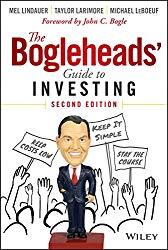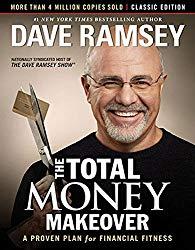Stock picking is somewhat of a talent like painting or playing guitar. A good stock picker will just have a feel about a company after looking over the data. He may not be able to say why he likes a particular company more than another, just that he does. Because not everyone will be a good stock picker, and it will probably take you many years to figure out whether you’re a good stock picker or not, everyone should include a basket of low-cost index funds for most retirement funds. A great book explaining how this is done is The Bogleheads’ Guide to Investing.
(Note, if you click on a link in this post and buy something from Amazon (even if you buy something different from where the link takes you), The Small Investor will receive a small commission from your purchase. This costs you nothing extra and is the way that we at The Small Investor are repaid for our hard work, bringing you this great content. It is a win-win for both of us since it keeps great advice coming to you (for free) and helps put food on the table for us. If you don’t want to buy something from Amazon or buy a book, how about at least telling your friends and family about our website as a great place to learn about investing and personal finance. Thanks!)

This is also the advice offered by Dave Ramsey in The Total Money Makeover: Classic Edition: A Proven Plan for Financial Fitness
Despite the conventional wisdom that index funds are the way to go,

One thing that SmallIvy Book of Investing: Book 1: Investing to Become Wealthy does not provide is a lot of information on how to pick stocks. As implied in the title, there is a second book coming. I intend for Book 2 to cover stock picking since that is a topic that requires a whole book of its own.
Since that book is yet to be written (I do have an outline and some of it written, but I have a lot of other projects I’m working on right now), I wanted to at least provide some information on some of the ratios I find useful when evaluating stocks. These are not secret, proprietary algorithms. They are very commonly used in stock analysis. Still, they are good to know since there is a reason they are very popular. If you want to find the kind of companies that I favor; those that will grow consistently over a long period of time, you should take the time to learn what they are and how to use them. Here they are with a brief description:
PE Ratio: The Price-to-Earnings ratio is a way to evaluate the relative price of a stock to its historical value (by comparing with the historical range), to other stocks in the same industry, and of the stock market in general (by looking at the PE of the S&P, for example, compared with historical values). The PE ratio is the price divided by the earnings per share. Note that is earnings can be predicted relatively well, PE ratio can be used to forecast future prices.
PS Ratio and Price-to-Book: Price-to Sales and Price-to-Book are alternative ratios used to judge the relative price of a stock. These are useful for stocks that do not always show a profit, making calculation of PE ratio not always possible. Price-to-sales is the price divided by the sales per share (or market cap divided by total sales). Book value is the value of assets of the company (equipment, properties, etc…) and represents the break-up or sales value of the company.
Earnings Growth Rate: Because stock price tends to grow with earnings, I look for a substantial but sustainable earnings growth rate, usually in the 10-20% range.
Yield: This is the dividend amount divided by the current share price. This both indicates the fixed income return of the stock (provided that the company will continue to pay the dividend) and also indicates the relative value. One can compare the current yield with historical values to see if a stock is over or under-priced, or compare with other stocks in the same industry for the same reason. Note, however, that an unusually high yield usually means that the dividend is likely to be cut or the stock is otherwise risky.
Debt: I personally like no debt on the balance sheet. It indicates a well-run company with plenty of options. After all, they can always go into debt if they so choose if they have a clean balance sheet. This can also indicate that they have sufficient cash flows to cover expenses and do other things like buy back stock or raise dividends.
Price: I tend to look for stocks int he $15-$50 range. This is low enough for most investors to buy round lots (100 shares) yet no so low that mutual funds and others can’t buy shares (there is usually a lower limit in price below which mutual funds can’t invest).
While some try to use ratios and factors to derive a magic formula, I generally find I get a gut feeling about a company. I consider the above factors, but there are certainly no rules written in stone.
Finally, if you’re interested in getting started in investing, but don’t seem to ever have the money needed to invest, you clearly need to get a hold of your cash flow. Creating a budget and a cash flow diagram, then tweaking your plans to free up the cash you need, is a must. You can learn how to do this in FIREd by Fifty: How to Create the Cash Flow You Need to Retire Early

Have a burning investing question you’d like answered? Please send to [email protected] or leave in a comment.
Follow on Twitter to get news about new articles. @SmallIvy_SI
Disclaimer: This blog is not meant to give financial planning or tax advice. It gives general information on investment strategy, picking stocks, and generally managing money to build wealth. It is not a solicitation to buy or sell stocks or any security. Financial planning advice should be sought from a certified financial planner, which the author is not. Tax advice should be sought from a CPA. All investments involve risk and the reader as urged to consider risks carefully and seek the advice of experts if needed before investing.

